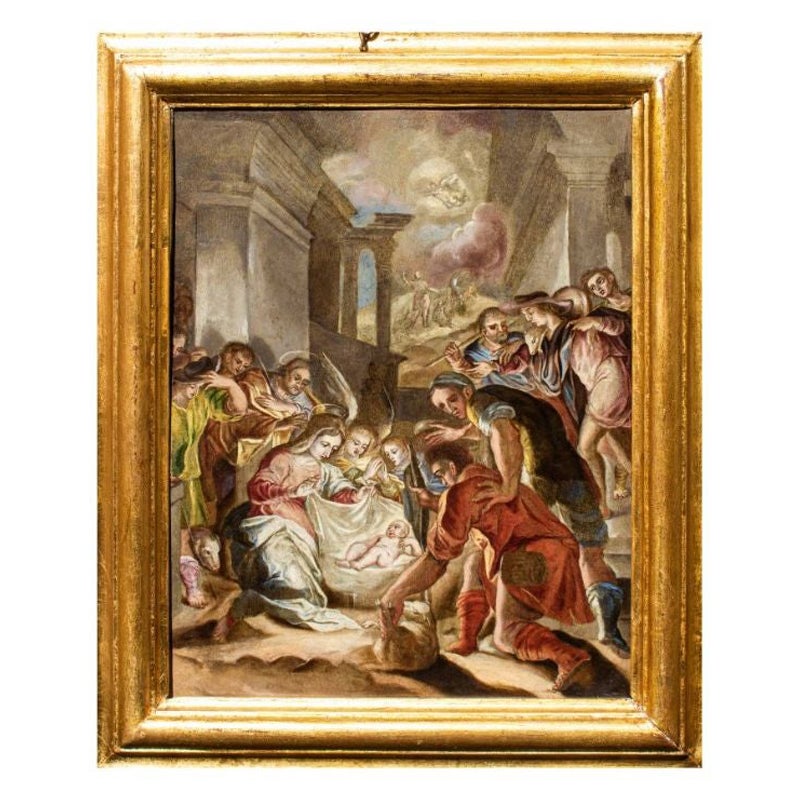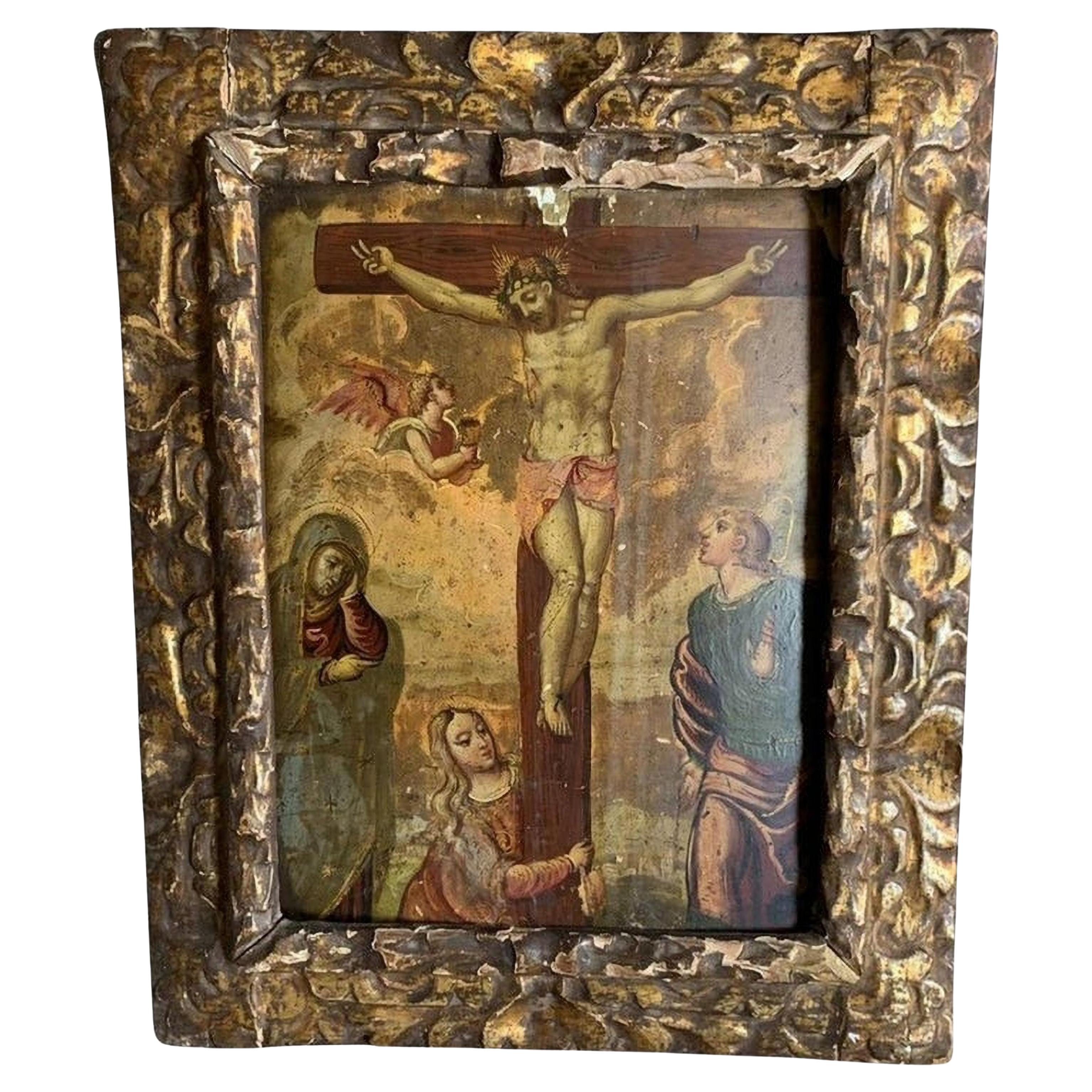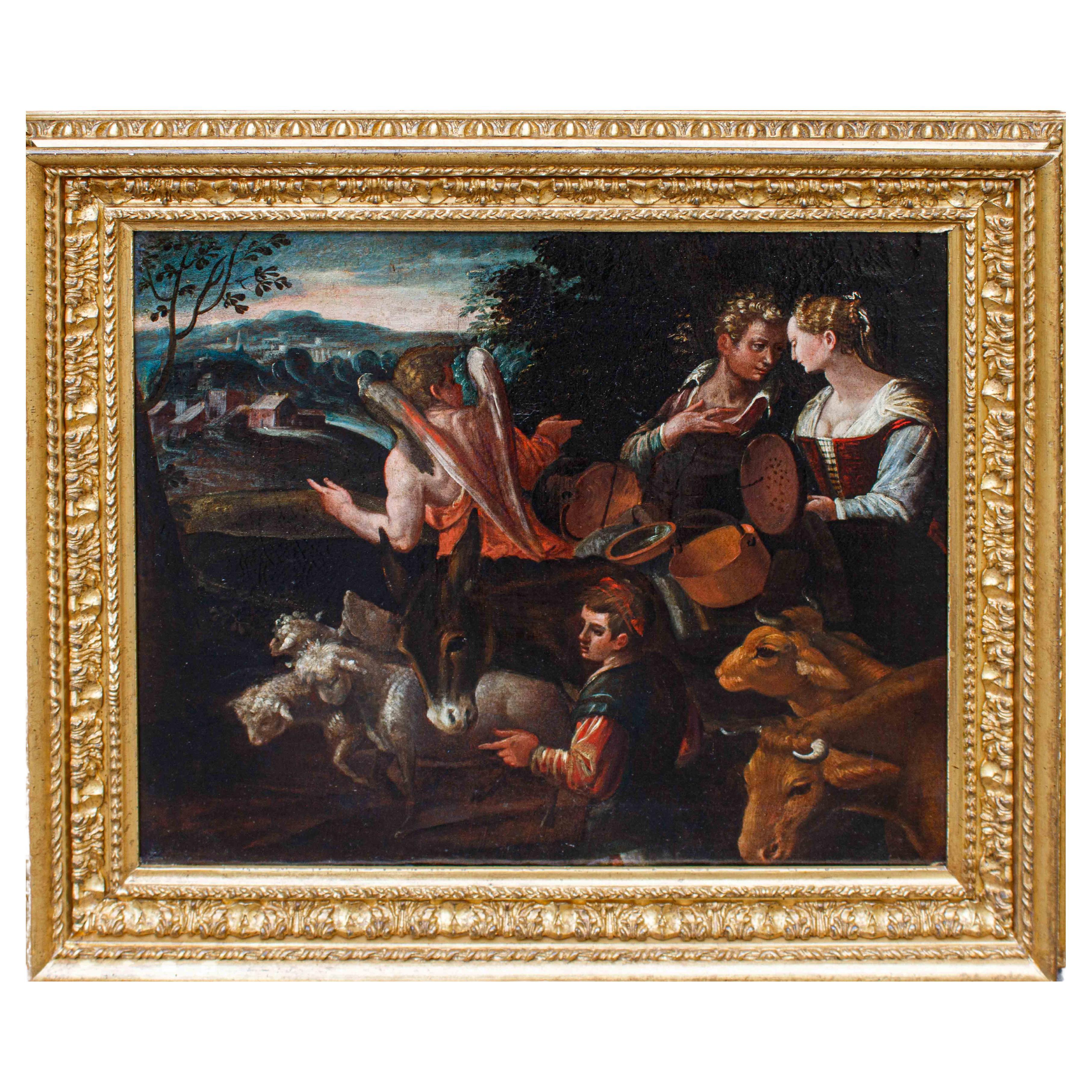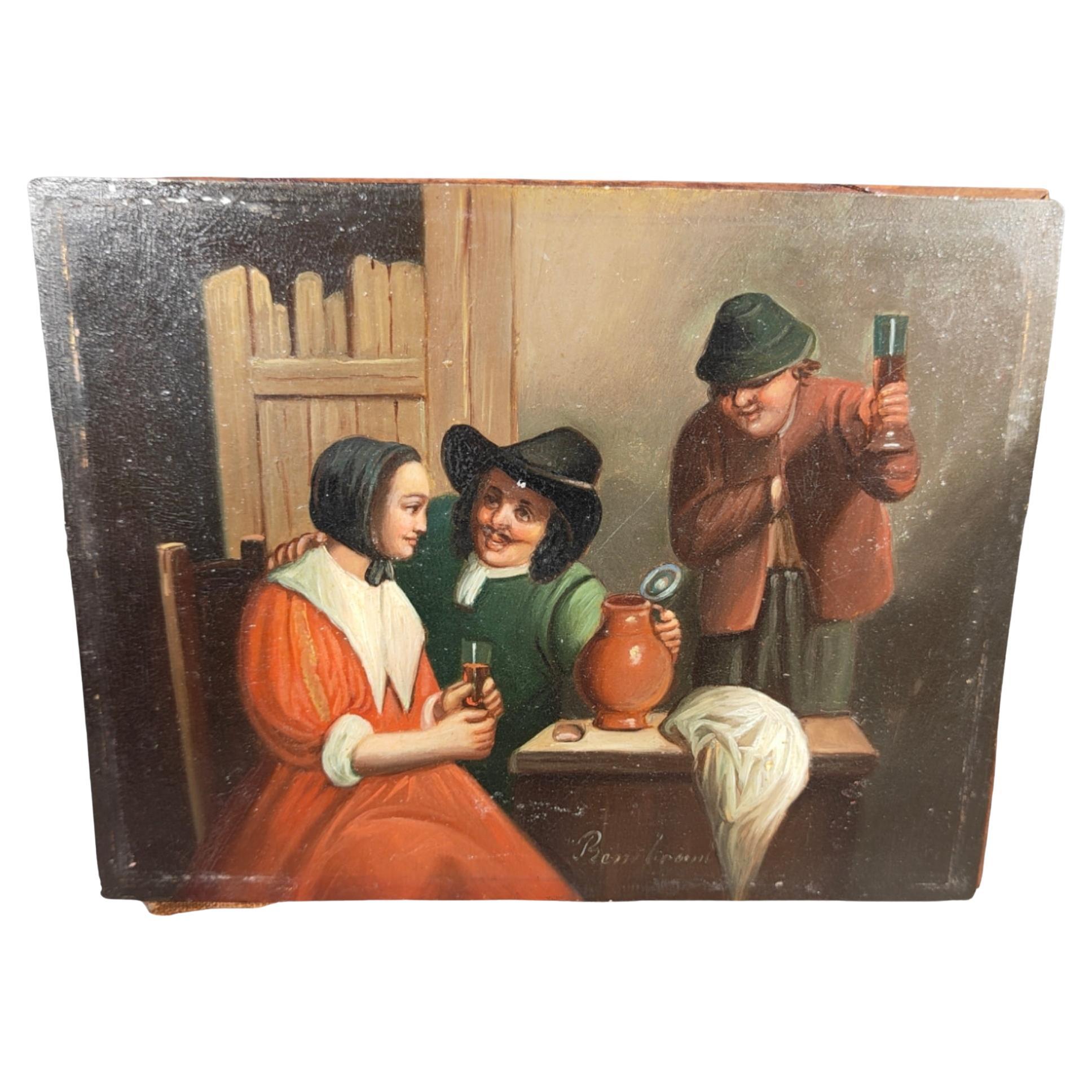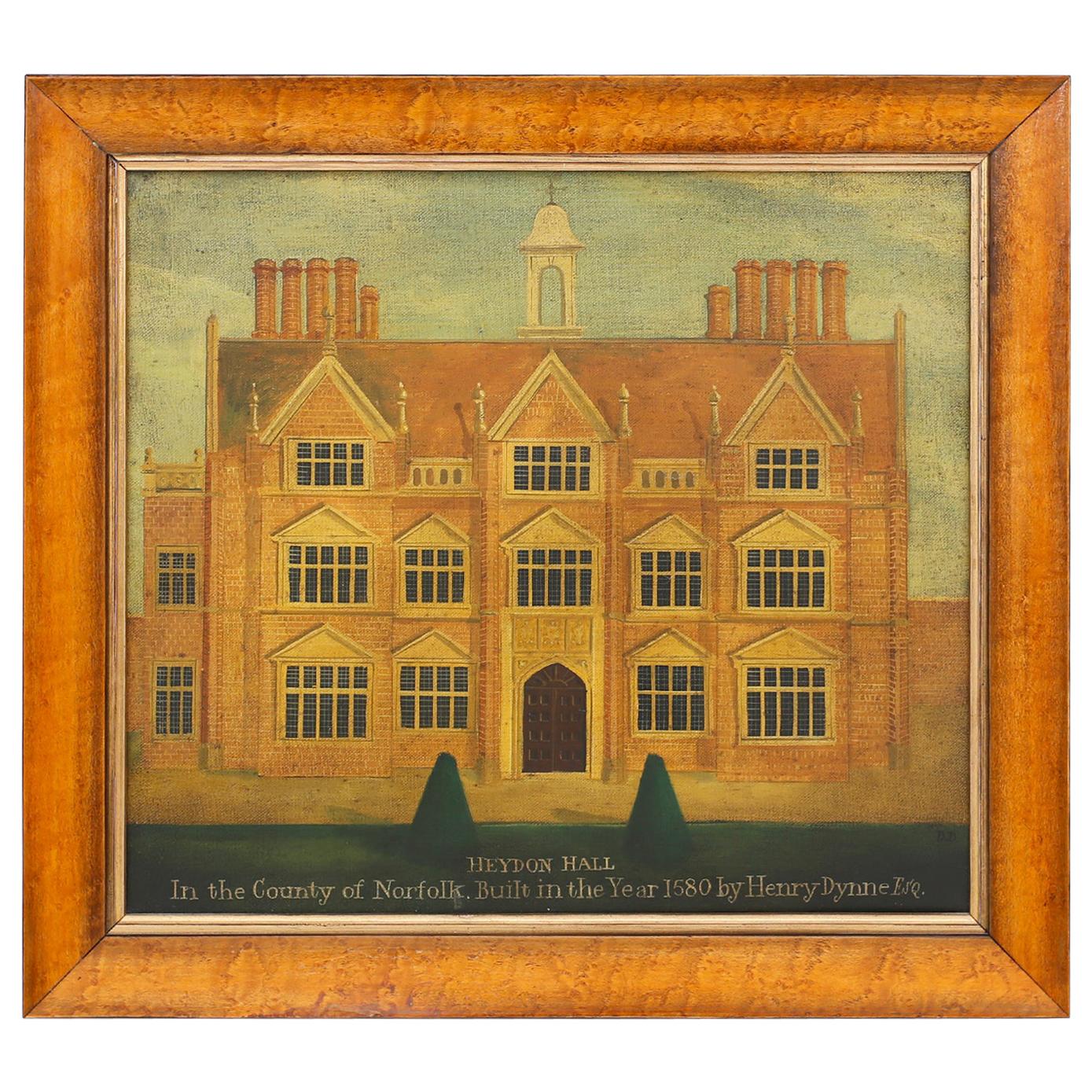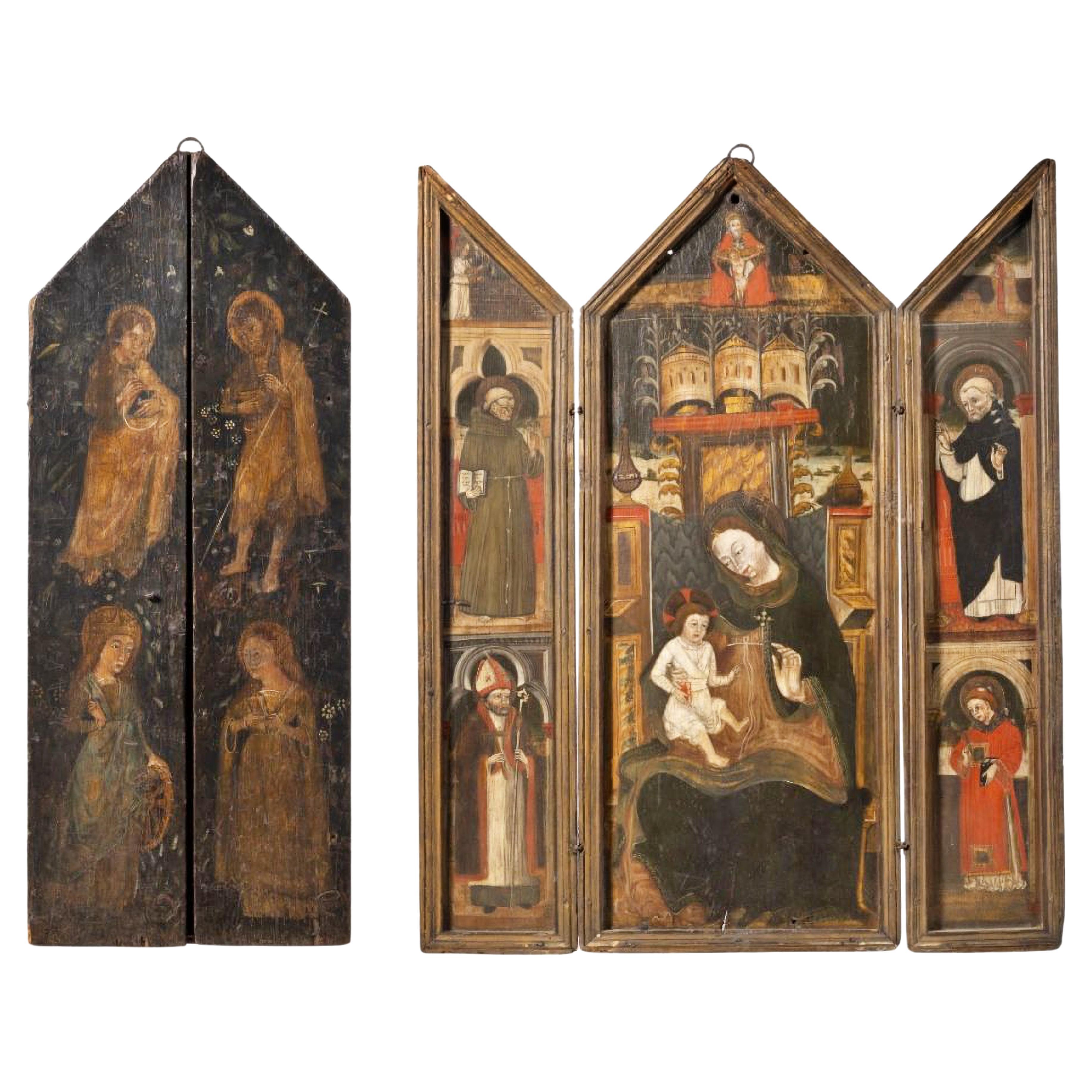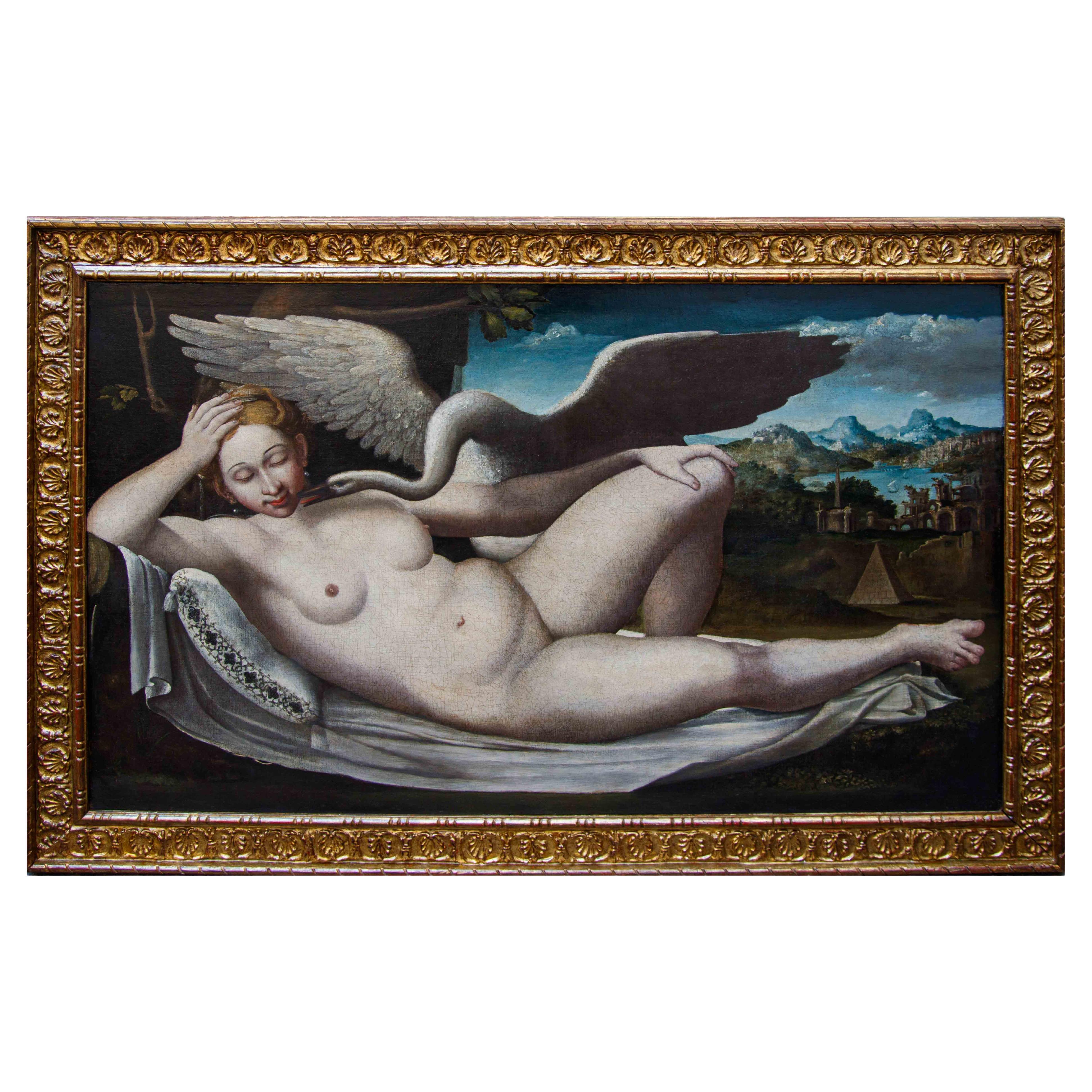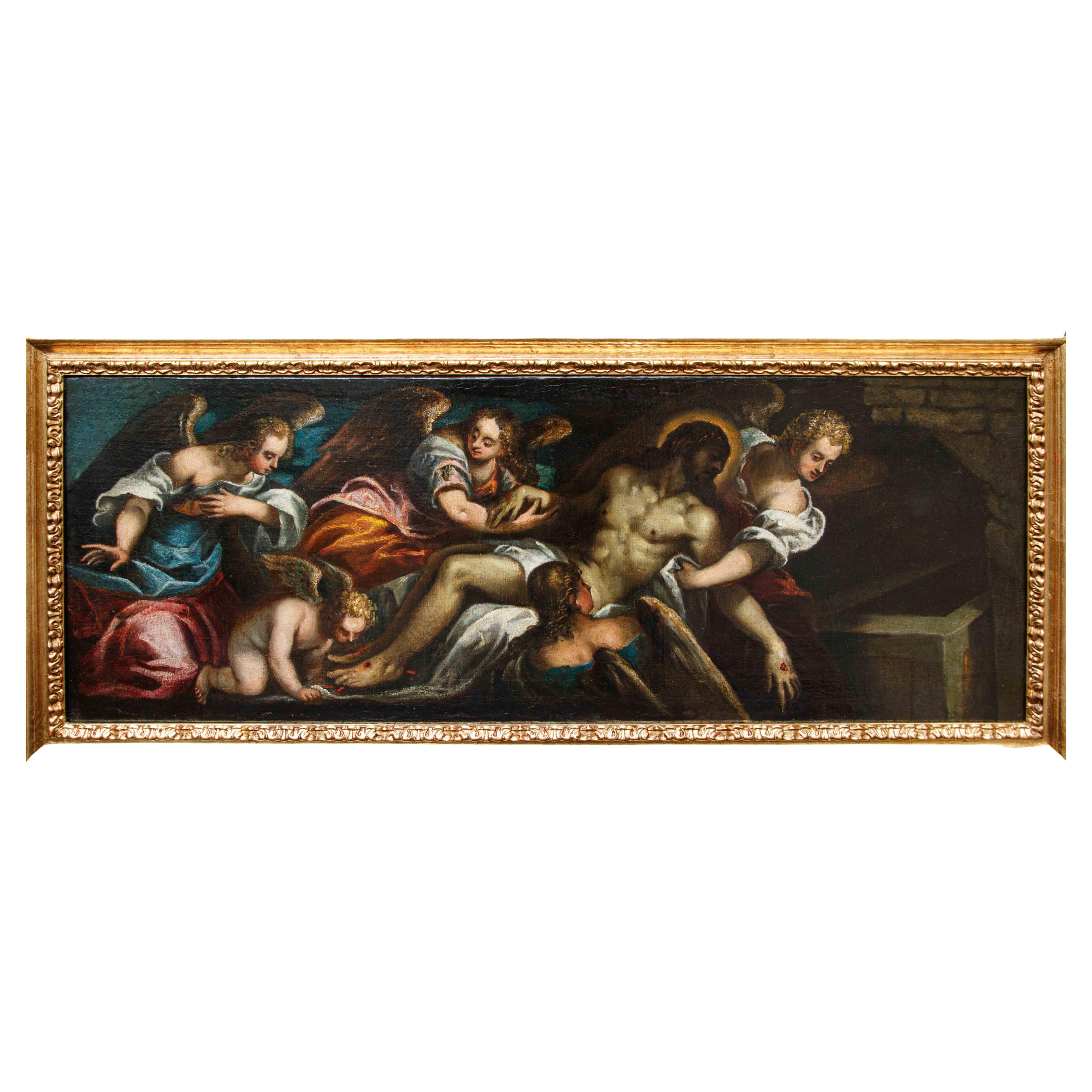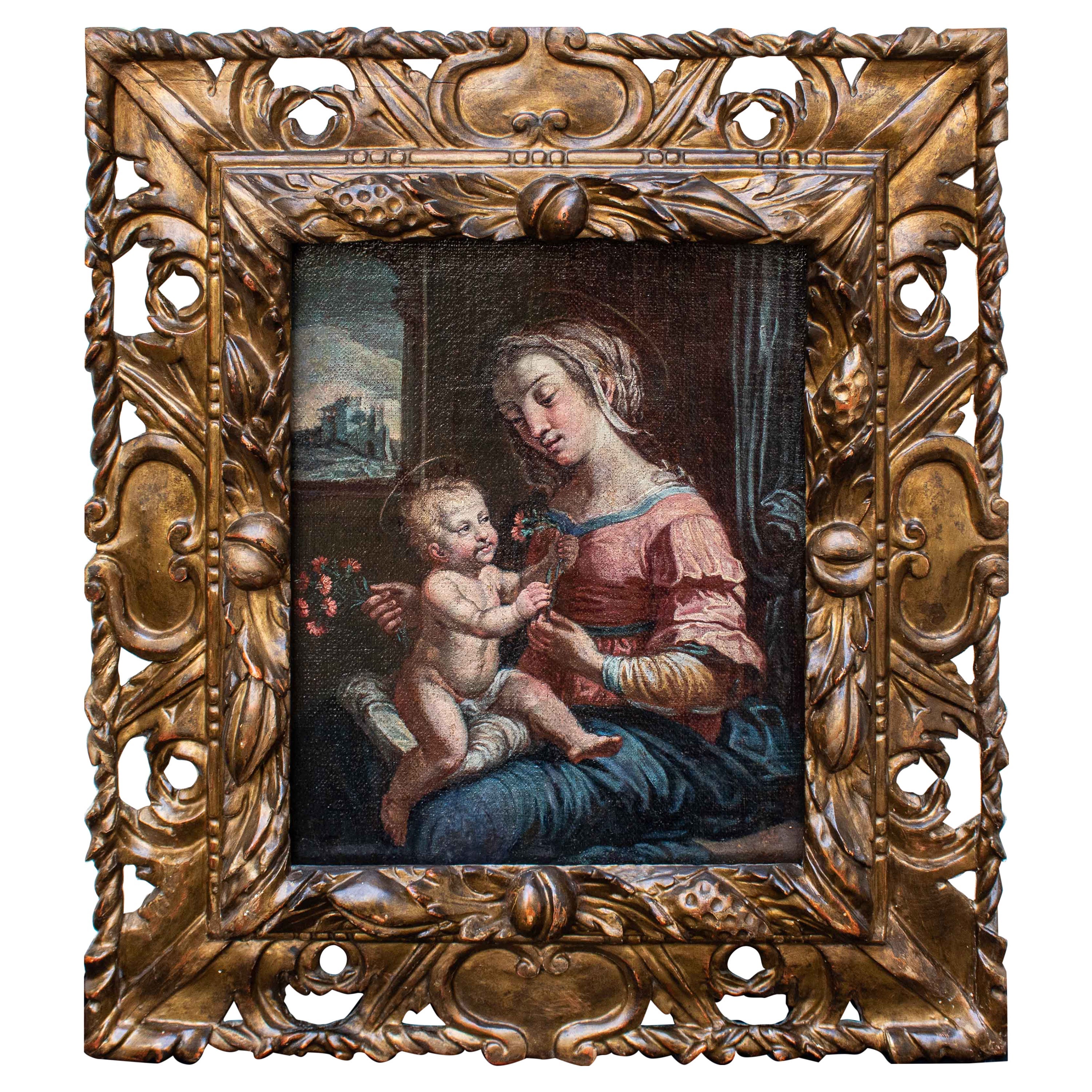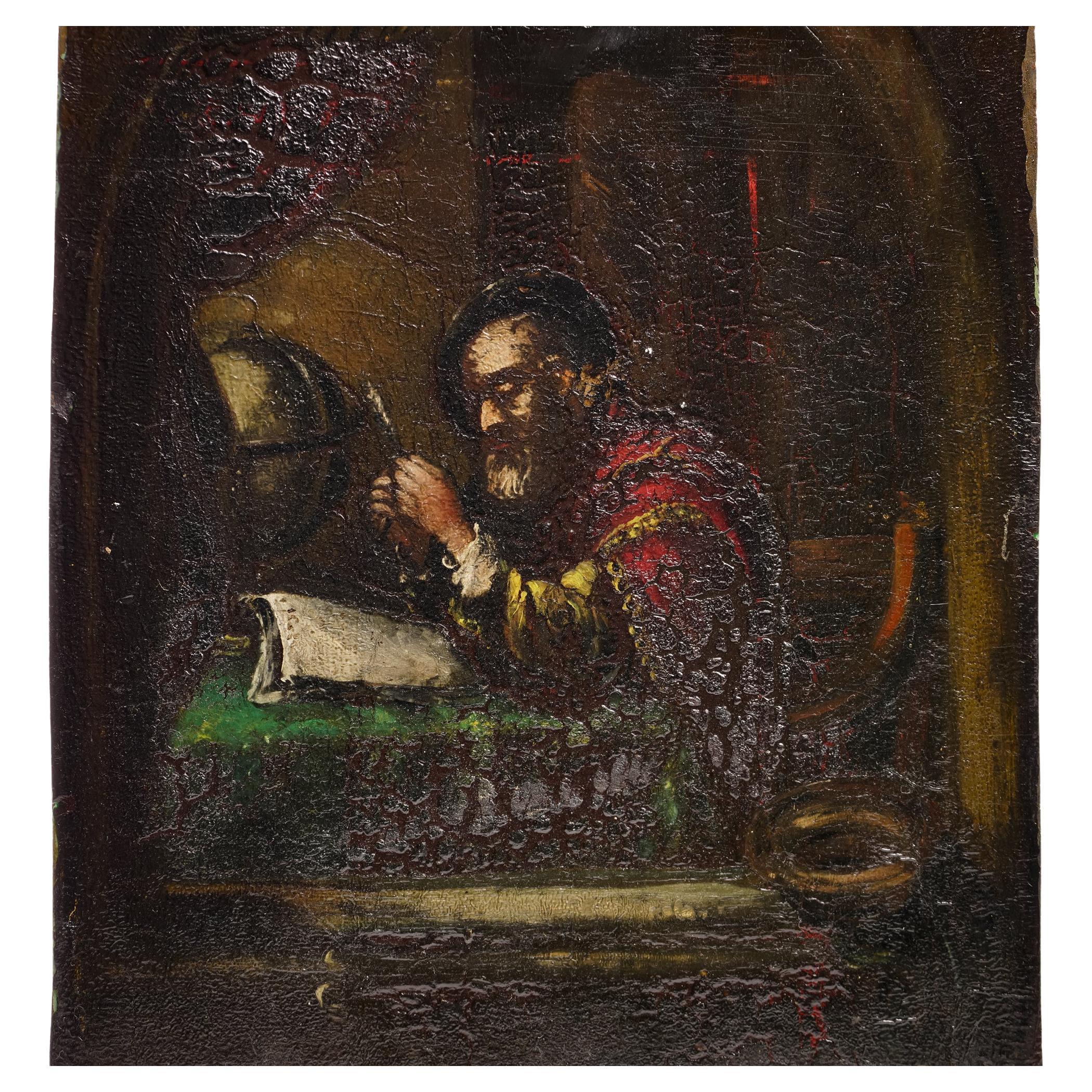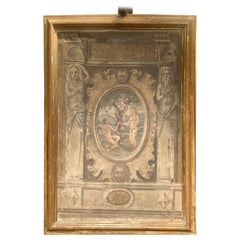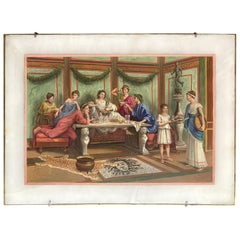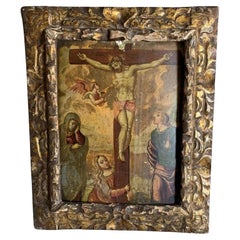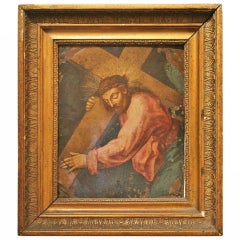
Ferraù Fenzoni School, 16th century Oil on Copper Christ Carring the Cross
View Similar Items
Want more images or videos?
Request additional images or videos from the seller
1 of 7
Ferraù Fenzoni School, 16th century Oil on Copper Christ Carring the Cross
About the Item
- Attributed to:Ferrau Fenzoni (Painter)
- Dimensions:Height: 12.8 in (32.5 cm)Width: 11.23 in (28.5 cm)Depth: 1.58 in (4 cm)
- Style:Other (Of the Period)
- Materials and Techniques:
- Place of Origin:
- Period:
- Date of Manufacture:Late 16th Century
- Condition:Wear consistent with age and use.
- Seller Location:Firenze, IT
- Reference Number:1stDibs: LU95031220564
About the Seller
5.0
Vetted Seller
These experienced sellers undergo a comprehensive evaluation by our team of in-house experts.
Established in 1950
1stDibs seller since 2012
109 sales on 1stDibs
Typical response time: 2 hours
More From This SellerView All
- Italian Renaissance 16th Century Egg Tempera Fresco on Canvas, Adam and EveLocated in Firenze, ITThis art piece is a Florentine Renaissance period fresco of late 1500 hand painted with egg tempera representing the temptation of Adam and Eve, this pivotal moment in the history of...Category
Antique 16th Century Italian Renaissance Paintings
MaterialsCanvas, Wood, Paint
- Carelli 19th Century Italian Rectangular Oil on Board Landscape Marine PaintingBy Consalvo CarelliLocated in Firenze, ITIt’s a joy for the eyes and soul to admire the countless details of this village overlooking the sea of Naples’ bay with the mount Vesuvius on the background depicted in this old mas...Category
Antique 19th Century Italian Barbizon School Paintings
MaterialsWood, Paint
- Italian 19th Century Oil on Alabaster Painting Pompeian Interior Scene in OrmoluBy Luigi BazzaniLocated in Firenze, ITThis Italian 19th century oil on alabastrer painting depicts an opulent interior in full ancient neoclassical Pompeian style with people festing. The figurative inner scene is painted on a rectangular alabaster slab and housed in a wonderful giltbronze frame resting on casted arrow feet. This is a single section of a bigger surtout de table. You can now use it as a decorative centrepiece on a table or on a console or turn it into a wall decoration. We can provide framing options in this case. The characters enjoy a rich banquet in an elaborate interior, the room renderings...Category
Antique 19th Century Italian Classical Roman Paintings
MaterialsAlabaster, Bronze, Ormolu
- 19th Century French Oil on Canvas Allegoric Blue and White Painting with CherubLocated in Firenze, ITThis lovely French 19th century oil painting on square canvas has a sky blue background, a fluffy cloud fills the central part of the painting where a woman is lying down playing the lyre, while a graceful cherub seems to twirl over her. This oil on canvas painting represents the allegory of music - with a woman dressed in classical clothes and a putto- a very popular theme during all the neoclassical age, with its lively scene inspired by the Rococo period. The composition creates a awesome trompe-l'œil effect thanks to the color palette scheme. Well painted white and gray shadings (chiaro scuro) that stands out from the light blue background. This painting originally was an over door frieze...Category
Antique 19th Century French Rococo Paintings
MaterialsWood, Canvas
- 20th Century Italian Acrylic Abstract Urban Expressionist Painting on CanvasBy Andrea SpinelliLocated in Firenze, ITThe present work of art titled "Urban Abstraction (ripped off posters)" is part of a series of paintings that the artist composed in the 1980s and 1990s inspired by the observation of the urban reality of those years. The artist take the cue from his walks in Florence, both in the center and in the suburbs, and by the observation of billboards and posters scattered throughout the city. The mass of information, colors, messages and words were carried on the canvas with acrylic colors, ideally reconstructing the tears and overlaps of all the information and advertising contained on these huge sheets of paper that invade our cities. The geometric lines are overlaid with jagged lines, overlaps and color dripping and also the choice in the color palette, with different shades of white, gray, rose, orange red and blue helps in rendering the result of the tears and ripped paper. The result is a beautiful multicolored modern abstract canvas, both aesthetically and ethically, with many rich layers of color, texture and expression in which the artist leaves his own message. The painting is housed in a simple modern white lacquer wood frame. Andrea Spinelli...Category
Late 20th Century Italian Modern Contemporary Art
MaterialsCanvas, Acrylic
- French Early 20th Century Tempera on Canvas Folding Screen with Seascape ViewLocated in Firenze, ITThis French early 20th Century folding screen is made up of four canvases entirely painted with textured tempera featuring a marine l...Category
Early 20th Century French Screens and Room Dividers
MaterialsMetal
You May Also Like
- 16th Century Adoration of The Shepherds Painting Oil on CopperLocated in Milan, ITAttr. to Girolamo Siciolante known as da Sermoneta (Sermoneta, 1521 - Rome, 1575) Adoration of the Shepherds Oil on copper, 39 x 29.5 cm Frame 47 x 39 cm The refined taste, the refined poses, the definition of the anatomies, the vibrant light, allow us to identify for this painting the hand of a Mannerist painter active during the sixteenth century. In particular, the composition and stylistic research allow us to attribute the panel to Girolamo Siciolante, known as da Sermoneta (1521 - 1575). His first training took place under the guidance of Leonardo Grazia known as da Pistoia (1502 - 1548). Later he settled in Rome where he was able to see the painting of Raphael and Michelangelo from life and where he was first a pupil and then a collaborator of Perin del Vaga...Category
Antique 16th Century Italian Paintings
MaterialsCopper
- Italian School Table of the 16th Century "Crucified Christ with the Virgin"By Europa AntiquesLocated in Madrid, ESItalian school table of the 16th century "Crucified Christ with the Virgin, Saint John and Mary Magdalene" Oil on board Period frame 16th century ( gold frame parts ) Measures: 41cm ...Category
Antique 16th Century Italian Baroque Paintings
MaterialsPaint
$3,515 Sale Price20% Off - 16th Century Adoration of the Shepherds Painting Oil on Copper by CarnevaleBy Carnevale StudioLocated in Milan, ITDomenico Carnevale (Sassuolo, 1524 - Modena, 1579) Adoration of the Shepherds Oil on copper, 42 x 28 cm Frame 54 x 36 cm Expert opinion of Prof. Emilio Negro The painting represents the Adoration of the Shepherds, the Child in the center, next to the Madonna kneeling in prayer and an angel behind her; towards him in the foreground a woman with a child in her arms, a shepherd with a sheep on the right, a bagpiper on the left and various other male and female characters turn to him. The architectures of the background, between which a glimpse of the landscape can be glimpsed, are hidden in the upper part by the clouds, where a "celestial glory" encamps with three flying angels. The painting shows mannerist characters that can be traced back to the second half of the sixteenth century, and can be traced back to an author from the Modena area, with stylistic references to the Bolognese Samacchini (1532 - 1577) and Passerotti (1529 - 1592). More precisely, it can be attributed to Domenico Carnevale (1524-1579), one of the most important masters of the sixteenth century active in the local area. The Carnival was formed in Emilia, his homeland, where he worked for many years. However, his works also show a clear Roman influence, dictated by a long experience in the city, during which he also dedicated himself to the restoration of the Sistine Chapel. Trained in the late-mannerist environment of Modena, he is also linked to the Parmesan Corrorese and Ferrarese Dossesque tradition; Carnival also always maintains a slight archaic sentiment in his work, The main stylistic reference must be identified in a work similar in subject and iconographic setting, coming from the church of the Pio Istituto Orfanelle di San Geminiano di Modena, currently part of the Art Collection of the Province, attributed to the same influence as the Carnival. Another interesting comparison should be identified with A Presentation of Jesus in the Temple...Category
Antique 16th Century Italian Paintings
MaterialsCopper
- Venetian school, Tobias and Sara in Nineveh, oil on canvas, 16th centuryLocated in Milan, ITVenetian School, second half of the 16th century Tobiah and Sarah led to Nineveh by the archangel Azariah Oil on canvas, 48 x 56 cm - Framed, 58 x 72 cm The present canvas, made w...Category
Antique 16th Century Paintings
MaterialsCanvas
- 17th Century Christ and the Samaritan Oil on Canvas Roman SchoolLocated in Milan, ITRoman school of the 17th century Landscape with bridge - Christ and the Samaritan woman at the well Oil on canvas, cm 42 x 59,5 - With frame, cm 54, 5 x 71 cm The small canvas portrays a broad view of the city surrounded by a bucolic and lush landscape, probably a reinterpretation of the Roman countryside or the Agro. The fulcrum of the canvas is the bridge consisting of several bays beyond which stands a village. In the distance the landscape made of green mountains opens into what looks like a lake crossed by boats. The landscape is animated by the human presence; not only small and fleeting figurines intent on walking along earthy paths but also the representation, in the foreground, of an Gospel episode, that of Christ and the Samaritan woman at the well. The landscape can be clearly traced back to a painter trained on the examples of the great seventeenth-century Roman baroque landscape that sees in the Lunette Aldobrandini by Annibale Carracci but also in Claude Lorrain, Nicolas Poussin and Gaspar Doghet are its greatest achievers. If in the past, therefore, the landscape was considered the scenic background on which to project the representation of divine or human characters, in the seventeenth century it became an autonomous and codified pictorial genre. With Carracci comes the so-called ideal landscape: a mental reconstruction of a peaceful and harmonious nature in which the dream of a perfect communion with man is realized. In the wake of Hannibal, as mentioned, during the seventeenth century the "classic" Roman landscape knows a long and happy season by artists such as Domenichino, and the French Claude Lorrain, Nicolas Poussin and Gaspar Dughet. Lorrain investigates the Roman countryside in all its aspects, studying the variations in the different hours of the day, the seasons or weather conditions, but always nourished by a sense of bucolic Virgilian. With Poussin the approach becomes intellectual elaboration and sophisticated rational construction. From the examples of the great masters, the Roman Baroque season, from the middle of the century, saw the flourishing of several personalities who, with shots, but also important personal reworkings, led to further spread the genre. Among the personalities that can be compared to the work in question we cannot fail to mention Crescenzio Onofri (1634-1714), defined by Salerno as the only true pupil of Dughet, who then spread in Florence the taste of the Baroque landscape influencing Tuscan painters such as Panfi and Peruzzini. His paintings are in various Roman collections; such as, for example, the landscapes from the Sacchetti Collection and today at the Pinacoteca Capitolina. and those in the Almagià collection in Rome, others in the Palazzo di Montecitorio, but the most conspicuous group is in the Galleria Doria. In comparison we can mention the two passages of the National Gallery in London, the landscape with a bridge over the Antiquarian Market but also the design of the National Gallery of Art in Washington. In the work you can also find the influences of the art of Giovanni Francesco Grimaldi...Category
Antique 17th Century Italian Paintings
MaterialsCanvas
- Oil On Copper 19th Century Dutch schoolLocated in Madrid, ESOil On Copper 19th Century SMALL OIL ON COPPER OF THE XIX CENTURY DUTCH SCHOOL MEASURES: 25X15 CMCategory
Antique Early 19th Century Paintings
MaterialsCopper
$747 Sale Price20% Off
Recently Viewed
View AllMore Ways To Browse
Antique Copper Wall Light
18th Century Oil On Copper
Religious Paintings On Copper
17th Century Oil Paintings Giltwood Frames
Last Judgement
Deposition Of Christ
Oil On Copper Painting 17th 18th
Antique Baroque Painting
Antique Wooden Painting Frames
70s Wall Decoration
Mid Century Wall Horses
Danish Modern Oil Paintings
Painting With Gold Pair
Paintings Of The Xvi Century
19th Portrait Gentleman
17th Century Netherlands Painting
Mid Century Vintage Large Painting
19th Century Portrait Gentleman
